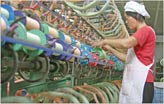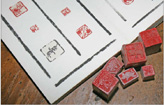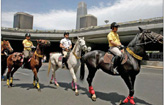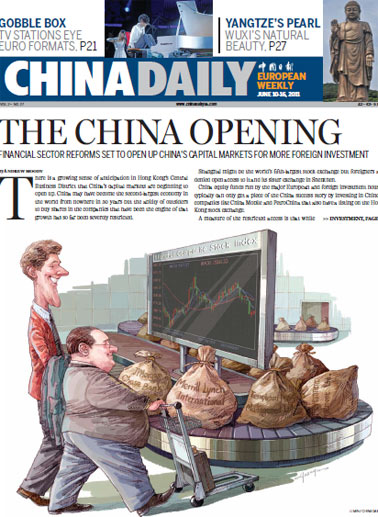Society
Global greed drives stolen relics market
Updated: 2011-06-13 09:05
By Zhang Yan (China Daily)
BEIJING - Taiwan, Canada, the United States and Europe are major destinations for smuggled cultural relics from the Chinese mainland, a senior police officer warns.
Wei Yongshun, an officer at the criminal investigation bureau under the Ministry of Public Security, said tomb raiders and smugglers of cultural relics usually work in collusion with overseas buyers.
"Stolen mainland cultural relics are often first smuggled to Hong Kong and Macao, then transported to Taiwan, Canada, the US and some European countries for selling," he told China Daily.
| ||||
The Chinese art market has witnessed robust growth in recent years, highlighted by a number of record-setting auctions.
According to a report released in 2010 by artprice.com, a website focusing on the art market, the Chinese mainland reported annual art revenue of $830 million, accounting for 17.4 percent of the global market, up from 7.7 percent in 2008
A hanging scroll, Zhichuan Resettlement, featuring mountains and water by Yuan Dynasty painter Wang Meng (1301-1385), set an auction record of 402.5 million yuan ($62.11 million) earlier this month.
A rare hand scroll copy of ancient Chinese calligrapher Wang Xizhi's (303-361) work sold for 308 million yuan at an auction in Beijing in November.
"Investment, high economic returns and a craving among collectors are the driving force behind the theft of relics," Wei said.
"Local governments' indifference toward heritage protection as well as poor supervision by authorities are also to blame."
Dai Peng, director of the criminal investigation department at Chinese Public Security University, told China Daily that cultural artifacts are usually found in poor regions where local officials fail to pay enough attention to their protection.
Statistics from the Ministry of Public Security show that the country recorded 387 cases involving thefts of cultural relics and 451 cases of tomb raiding in 2010.
Police dismantled 71 criminal gangs, detained 787 suspects and recovered 2,366 cultural relics from December 2009 to June 2010.
Yang Lizhou, former curator of the National Art Museum of China, said in March that 800 ancient tombs were robbed in 10 months spanning 1998 and 1999. This figure jumped to nearly 10,000 in 2010.
In February 2006, a gang raided the tomb of Empress Zhenshun (699-737), the queen of Tang Xuanzong (685-762), the seventh emperor of the Tang Dynasty (618-907), in suburbs of Xi'an, capital of Shaanxi.
They robbed a 27-ton coffin and five murals and smuggled them to the US.
Xi'an police finally found the treasures, after four years, in a US antiquary's collection and succeeded in persuading him to return them unconditionally to Shaanxi provincial history museum in March this year.
The Ministry of Public Security and the State Administration of Cultural Heritage started an 8-month campaign in May to crack down on heritage-related crimes in 17 provincial-level regions, including Beijing, Hebei, Shanxi, Shaanxi, and the Inner Mongolian autonomous region.
Many of the gangs are family run, and use technology and the latest equipment, Wei said.
Gangs even employ technical advisers to help locate and explore ancient tombs and then hire local farmers to break in and steal, Wei said. The Internet provides a platform to trade the stolen relics.
Meanwhile, illicit relic trading is booming in the country as some criminal masterminds use antiques or used goods shops as a cover, he said.
Xu Yongjun, a law professor at Peking University, said lack of supervision of the antiques market makes it easier for smugglers.
E-paper

Pearl on the Yangtze
Wuxi is considered a town of natural beauty and its motto is "city of water and warmth".
Prose and consternation
Riding on a mystery train
Way of a warrior
Specials

Wealth of difference
Rich coastal areas offer contrasting ways of dealing with country's development

Seal of approval
The dying tradition of seal engraving has now become a UNIVERSITY major

Making perfect horse sense
Riding horses to work may be the clean, green answer to frustrated car owners in traffic-trapped cities



